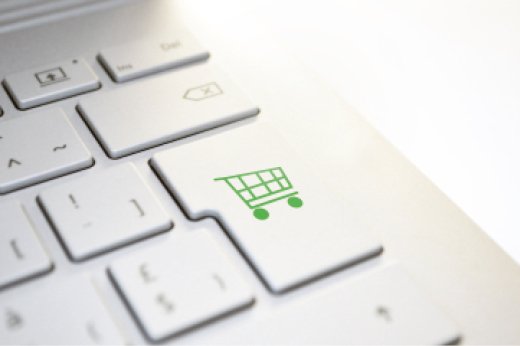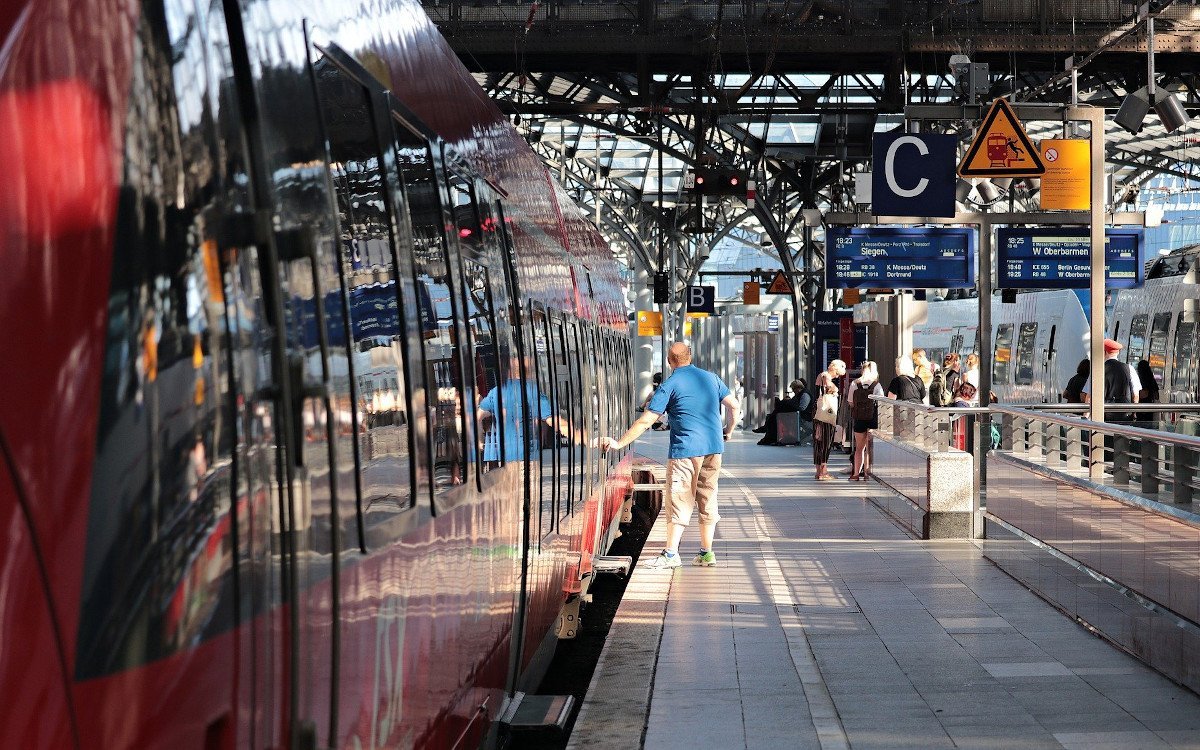Mid-March the world literally came to a standstill – due to the outbreak of the COVID-19 pandemic most countries went into lockdown. Offices and stores closed, airports and metro station deserted from one day to another and digital signage and DooH displays became useless. While experts expected the lockdown to last only a 2-3 weeks followed by a fast v-shaped recovery, it came different.
The lockdown lasted two months – some regions even longer – and the restart of the economies proved to be a slow and painful process. The real damage started to become only visible during restart in late May / June depending on the region. Most companies are still in WFH-mode (work from home), expected to last a few more months, some larger enterprise announced to wait till 2021 before office worker are welcome back to the new normal. In line with the overall trend, the digital signage industry also came to a standstill.
The retail sector has been particularly affected. By far the worst affected is the global tourism and hospitality industry as most people will not able to travel for months. In general, the global economy took its hardest hit in decades, with GDP forecasted to fall between 6-14% depending on the country. Not only the digital signage industry is waking up to a post-COVID reality worse than the Great Depression hundred years ago. The Bank of England expects UK GDP to fall by 14% over 2020, driven by a 25% decline in the second quarter – the worst crisis since 1706.
But the restart since June has proved to be more dynamic for many industries as expected. The impact differs widely for every vertical market and therefore also for digital signage providers. One of winners of the crisis has been digital – especially online shops. Even online sales have flattened after the restart, online will be the largest beneficiary of the crisis.
Retailers need to adapt to the new normal. Fast-Fashion market leader Inditex (Zara) and H&M announced to reduce the number of stores and to aggressively expand cross-platform digital activities. By 2022 Zara expects online sales to account for over 25% of the total, compared with 14% in 2019. To achieve the goal Inditex plans to invest €1bn to boost online and an additional €1.7bn to further integrate the store platform. While slightly reducing the number of stores globally, Inditex wants to upgrade the remaining stores with more digital touch points offering frictionless on- and offline shopping. Each Inditex store, whether online or physical, will become a sustainability hub, consuming less and renewable energy, eliminate single-use plastic, recycle all materials, and foster the reuse of all garments.
The first reaction for most retailer after lockdown was to expand online activities. This will continue but it has become obvious that a combination of on- and offline retail will be necessary to cater all target groups. The biggest challenge remains to offer a seamless user experience regardless which channel / platform consumers are using. The linking technology for many seems to be mobile combined with digital signage / self-service touch points instore.
H&M presented end of June 2020 a whole bundle of initiatives for an improved customer experience. The corona situation is accelerating the already rapid changes in customer behavior, and the H&M group’s transformation work continues to meet customer expectations and needs.
Many of H&M digital initiatives are targeting long-time changes in consumer behavior, which have been accelerated through COVID-19.
Recent studies show how fast consumer behavior changed since the outbreak. According to the m1nd-set travel retail study “CX: Attitudes & Expectations Pre and Post Covid-19” (June 2020) consumers are more anxious and prefer digital over human contact instore. 62% of consumers will refrain from being in proximity with retail personnel, while 51% will refrain from unnecessarily touching products. What seems at first as a doomsday scenario for physical retail, reveals at second glance many new opportunities for digital signage instore. Because 89% of survey consumers in Europe expect more digitalization and technology offers when shopping, eating out or using public transportation. Almost eight out of ten consumers want digital screens with content about the product, history, origin, ingredients etc and two-thirds of consumers want guided-selling displays. Most popular instore digital platform remains with 84% the mobile phone (App; QR-Code) for instore shopping and payment.
Whether H&M initiatives or recent market research, the results show that digital signage was never more useful than today. Fast changing regulations and consumer preferences require flexible and very dynamic digital platforms – instore as well as online. A great example was the temporary gold rush for digital entry management solution – often digital A-frames – across Europe. During restart governments strictly limited the number of customers allowed inside a store simultaneously. A professional screen, sensors and a DS CMS was all that was necessary. Retailers ordered these solutions by the thousands across the continent. Later the solutions also started recognizing mask usage while informing customers in the queue about the latest promotions and feel good communication. Especially in the beginning customers were anxious to enter stores or use public transportation. Retailer and transport associations used printed poster and later also digital screens to inform and convince consumers that it is safe to enter the store or use the train.
But in the crisis budgets are limited and large invests are off limit for many customers. The alleged gold-rush for digital signage was only short lived as retailer and consumer got accustomed to the new normal and regulations were lifted. As the COVID19 epidemic will continue till most people are vaccinated – most likely sometime in 2021 – new regional lockdowns are likely to return in fall/winter 2020/21. Retailers are aware that their existing digital signage-based entry management solutions will most likely be necessary again. For the time being the screens remain onsite counting and are used for promotions. Food discounter like Aldi and Lidl installed the new COVID-Displays permanently.
After two months of restart it is still difficult to forecast the real impact of the epidemic for retail and digital signage. Consumers are still reluctant to return to their hold habits i.e. still avoiding unnecessary use of touch screens. While touch will remain the preferred form of interactivity technologies like voice or eye/gesture tracking may increasingly be implemented complementing touch screens. Touch is without alternative for QSR restaurants, which will not be able to abandon order kiosk terminals. Similar ticket machines in transportation, even touchless travel via mobile will gain popularity.
One of the biggest winners is data. Historical experiences lost most of their value since the lockdown. Regulations and behavior changed too much. The necessity to measure consumer activities in the new reality has risen tremendously. Not only in retail or transportation but also in the corporate environment – the awareness increased to understand and control the often drastically changed flow of people. That will enable many new projects with sensors and analytics.
The first months were characterized by optimizing customer flow and minimizing the time customers spent instore. With the introduction of more relaxed regulations the focus is back on offering experiences. Consumers are choosing retailer foremost for the best value/promotions (67%) and secondly for experiences in the store (58%).

COVID-19 will not only change the way we live, shop or travel, but has also a huge impact for the digital signage industry. Industry consolidation (M&A) will accelerate in fall 2020, as integrators and digital signage software developers are forced to close their business or find a buyer (fire sale). Many market players are already struggling financially as many of their customers stopped paying recurring license und service fees with the beginning of the lockdown. Overdue accounts receivables have tripled compared to 2019 and some customers will either declare bankruptcy or at least drastically streamline their store networks. The digital signage industry needs to adapt fast to the new normal to survive. After the first shock (cash management) and short-lived promising sales pipeline (focus on ops) with the restart, the industry is entering the moment of truth. The focus is on stabilizing the business: Learn & adjust – cutting costs and workforce, adjusting solution offering and set the business for the next growth phase.
Not all the current digital signage market players will be able to adjust, therefore we expect many markets exits or acquisitions. Consolidation will be mainly driven by strategic investors (international integrators, display vendors) and by private equity investors.
How will the digital signage market develop in 2020? It remains a fair assumption that the digital signage market will shrink in 2020 like the GDP. Best case scenarios forecast a reduction of less than 10%, worst case scenarios are minus 20-30%. Significant growth should be back in 2021 depending on how the pandemic and the general economic situation is developing.
Get full access to all invidis yearbook articles – it’s free!
Download the industry bible for more analysis and market data. Secure your personal copy now – it’s free of charge.

